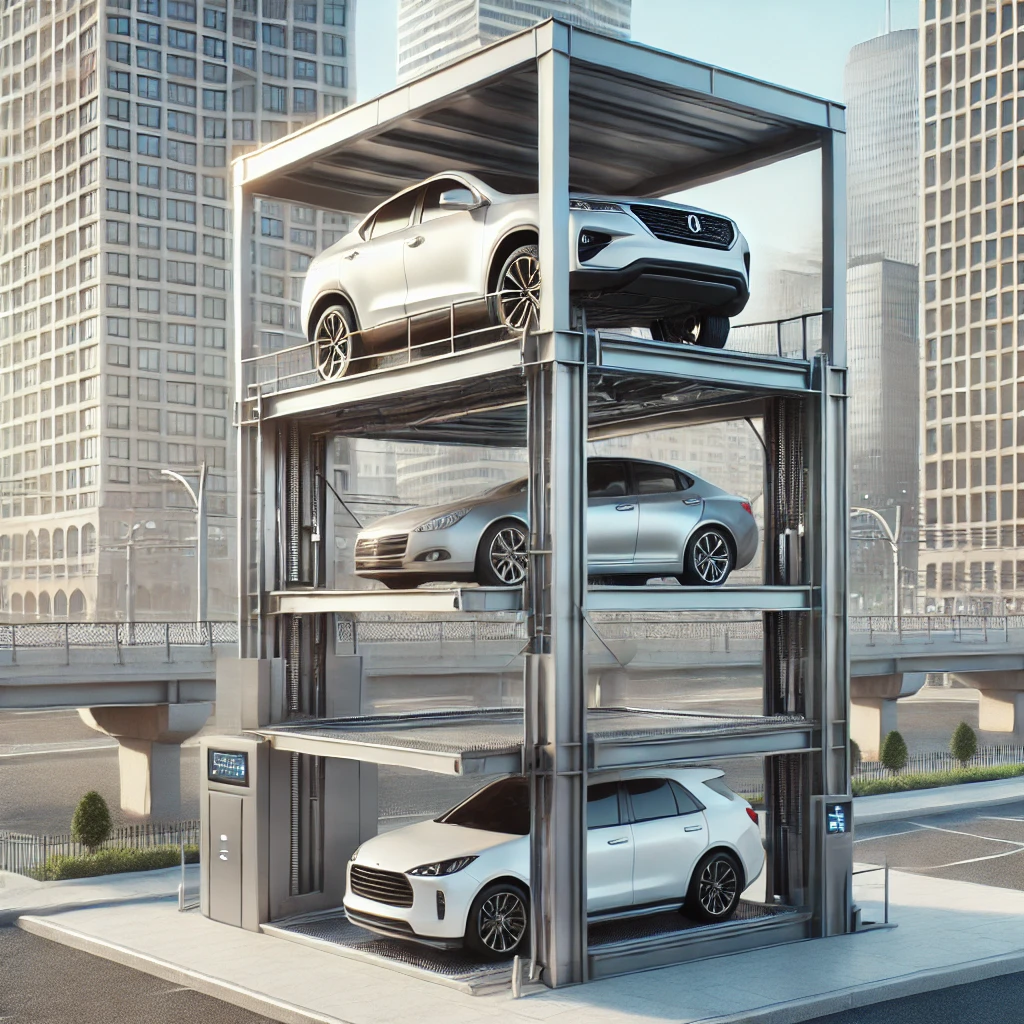Sponsored
Stack Parking System In Mumbai: Solving Urban Parking Woes

Mumbai, the city of dreams, is a place that thrives on movement, ambition, and constant change. As one of the most populated cities in India, it’s also home to a growing number of vehicles. With limited space and increasing traffic, the demand for smart, efficient parking systems has surged like never before. Amidst this chaos, the stack parking system in Mumbai has emerged as a practical solution, addressing urban space constraints while enhancing convenience for vehicle owners.
Understanding the Stack Parking System
A stack parking system, often referred to as a car stacker, is a type of mechanical parking solution that allows multiple vehicles to be parked vertically in a single bay. The concept relies on hydraulic or electric lifts to move cars up and down, making the most of vertical space.
Instead of using a vast area to park cars side by side, stack parking leverages height to place one vehicle above another. This not only reduces the footprint required for parking but also optimizes land usage, especially in dense urban environments like Mumbai.
Why Mumbai Needs Stack Parking Systems
Mumbai’s parking crisis is not new. With over 4 million registered vehicles and limited road and plot space, the city struggles to offer enough parking spots. Here’s why the stack parking system in Mumbai is crucial:
-
Limited Land Availability: Land in Mumbai is expensive and scarce. Traditional parking systems are land-intensive, whereas stack systems require a fraction of that space.
-
Growing Vehicle Ownership: As car ownership rises among middle-class and upper-middle-class families, demand for private parking spaces has increased dramatically.
-
Urban Development: High-rise buildings and commercial complexes often have limited parking allocation. Stack systems are easily adaptable to both residential and commercial infrastructures.
-
Traffic Congestion: Illegal roadside parking contributes heavily to congestion. Organized stack parking helps in decongesting roads by offering efficient off-street alternatives.
-
Smart City Integration: Mumbai’s push towards becoming a smart city includes embracing intelligent infrastructure solutions like automated stack parking.
Types of Stack Parking Systems
Not all stack parking systems are the same. Different variants serve different needs and layouts. Below are the most common types:
1. Two-Level Stack Parking
This is the most basic type. It accommodates two vehicles, one above the other. Ideal for residential buildings and small commercial spaces.
2. Multi-Level Stack Parking
These systems can accommodate three or more vehicles vertically. They are commonly used in malls, corporate buildings, and metro stations.
3. Pit Stack Parking
Part of the stack system is placed below ground level. This allows for seamless integration without disrupting the building’s aesthetics. It is useful where height restrictions apply.
4. Puzzle Parking Systems
Though not a pure stack system, puzzle parking combines horizontal and vertical movement. It is automated and can hold a large number of vehicles in a compact area.
Benefits of the Stack Parking System in Mumbai
As urban infrastructure evolves, the advantages of adopting stack parking systems are becoming more evident:
1. Space Efficiency
Stack parking allows for better utilization of vertical space. In a city like Mumbai, where horizontal expansion is limited, this is a game-changer.
2. Cost-Effective in the Long Run
While the initial installation cost might be high, stack systems save money over time by reducing land use and the need for expensive real estate expansion.
3. Faster Parking and Retrieval
With semi-automatic or fully automatic systems, vehicle retrieval is quicker, making it highly suitable for high-footfall areas like malls and offices.
4. Enhanced Safety and Security
Vehicles are less accessible to vandals or thieves since they’re mechanically stored. Additionally, reduced human interaction lowers chances of accidental damage.
5. Environmentally Friendly
Reduced search time for parking leads to fewer emissions. Also, stack parking encourages people to avoid roadside parking, which is often chaotic and unorganized.
6. Compliance and Regulation Support
The Municipal Corporation of Greater Mumbai (MCGM) has been actively promoting vertical parking systems, making it easier for developers to get approvals and subsidies for such innovations.
Use Cases of Stack Parking Systems in Mumbai
Several residential societies, commercial buildings, hospitals, and public spaces in Mumbai have already integrated stack parking systems with successful results. These include:
-
Residential complexes in Andheri, Powai, and Borivali that have limited basement space.
-
Hospitals and healthcare centers in Dadar and Sion where time and access efficiency are crucial.
-
Commercial hubs in Lower Parel, BKC, and Nariman Point where parking demand is intense.
-
Shopping malls and multiplexes where visitor volume demands quick and secure parking.
-
Public infrastructure projects, like metro stations and railway hubs.
Challenges in Implementing Stack Parking Systems
While stack parking offers many benefits, it is not without challenges:
1. High Installation Costs
Stack systems require advanced machinery, electrical wiring, and safety mechanisms, making upfront *** substantial.
2. Maintenance and Technical Support
Hydraulic and electric systems require regular maintenance. Lack of trained personnel may lead to system downtime.
3. User Awareness
Many vehicle owners are unaware of how to operate these systems. Training and user education are crucial to smooth operation.
4. Space for Machinery and Access
Even though stack systems save space, there’s still a need for maneuvering space, power units, and access pathways.
5. Regulatory Hurdles
While the government promotes these systems, inconsistent policy implementation can cause delays in approval and construction.
Government Support and Regulation
To support the city’s transformation into a sustainable metropolis, the local government has made changes in building codes to encourage vertical parking. New constructions are being advised to integrate stack parking systems as part of their building plans.
Moreover, the MCGM has also provided guidelines for fire safety and mechanical specifications, ensuring that installations meet strict safety norms.
Future of Stack Parking in Mumbai
As technology advances and urban spaces grow denser, the future of stack parking system in Mumbai looks promising. Key trends that could shape its growth include:
1. Integration with Smart City Technology
Automated stack parking systems integrated with mobile apps, digital payments, and real-time availability tracking will redefine the user experience.
2. Expansion to Suburban Areas
As development spreads beyond the central city, suburbs like Thane, Navi Mumbai, and Mira Road are witnessing increased adoption of stack parking systems.
3. Eco-Friendly Enhancements
Solar-powered stack systems and green-building integration could make this solution even more sustainable in the coming years.
4. Mass Adoption by Public Infrastructure
Public places like metro stations, stadiums, government offices, and transport hubs will likely integrate large-scale stack systems to meet growing commuter needs.
How Builders and Developers Can Leverage Stack Parking
Developers in Mumbai are realizing that smart parking solutions enhance the overall value of a property. Stack systems add to the building’s infrastructure quality and make projects more attractive to homebuyers and commercial tenants.
In premium real estate projects, stack parking is becoming a standard rather than a luxury. Some developers even use it as a USP to differentiate their projects in a competitive market. By partnering with engineering and architectural firms experienced in mechanical parking, developers can ensure a smooth implementation, from ***gn to installation.
The stack parking system in Mumbai is no longer a futuristic idea it is a present-day necessity. As the city continues to evolve, so must its approach to mobility and urban planning. With rising vehicle numbers, shrinking spaces, and the demand for convenience, stack parking stands as a symbol of modern infrastructure efficiency.
For residents, developers, and city planners alike, adopting and expanding stack parking systems is a forward-thinking step toward making Mumbai a more livable, organized, and future-ready metropolis. By reimagining how we use space, stack parking offers not just a solution, but a transformation in the way we move, live, and coexist in urban environments.





